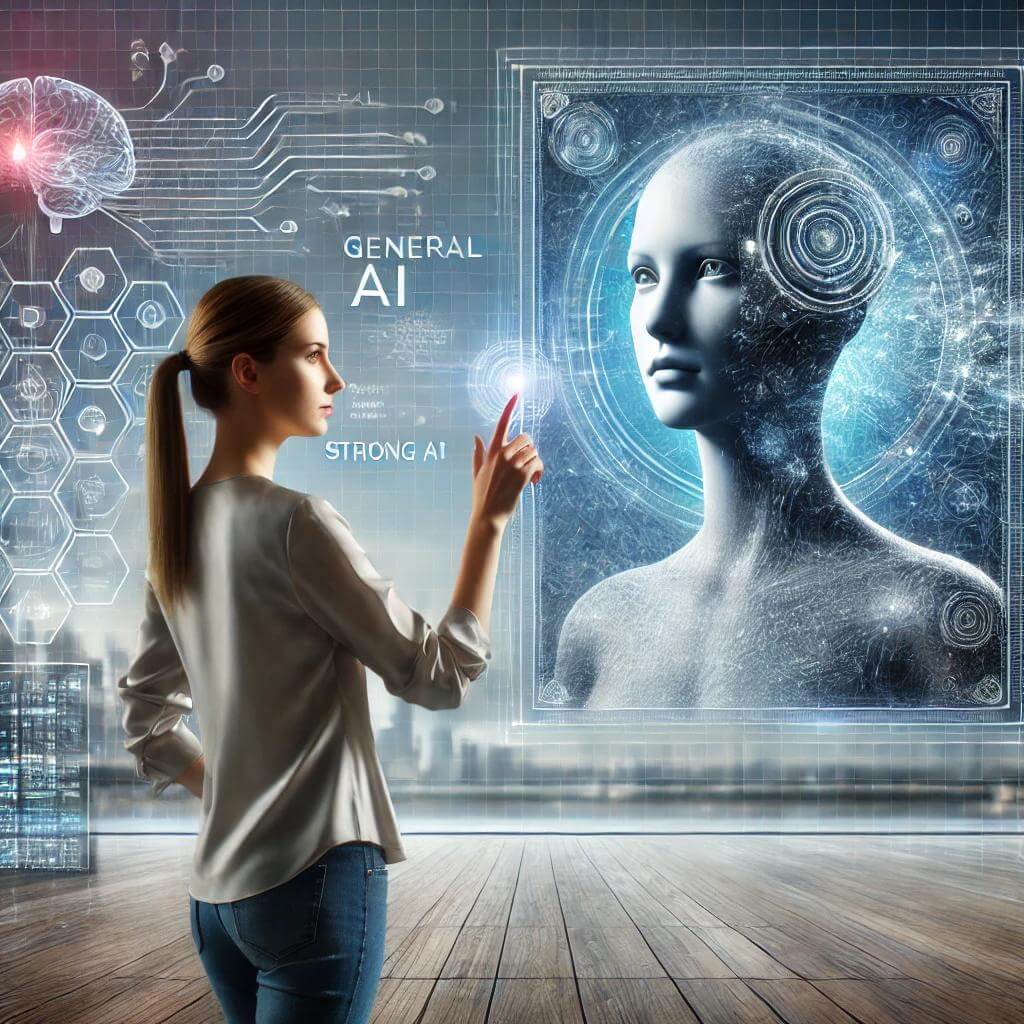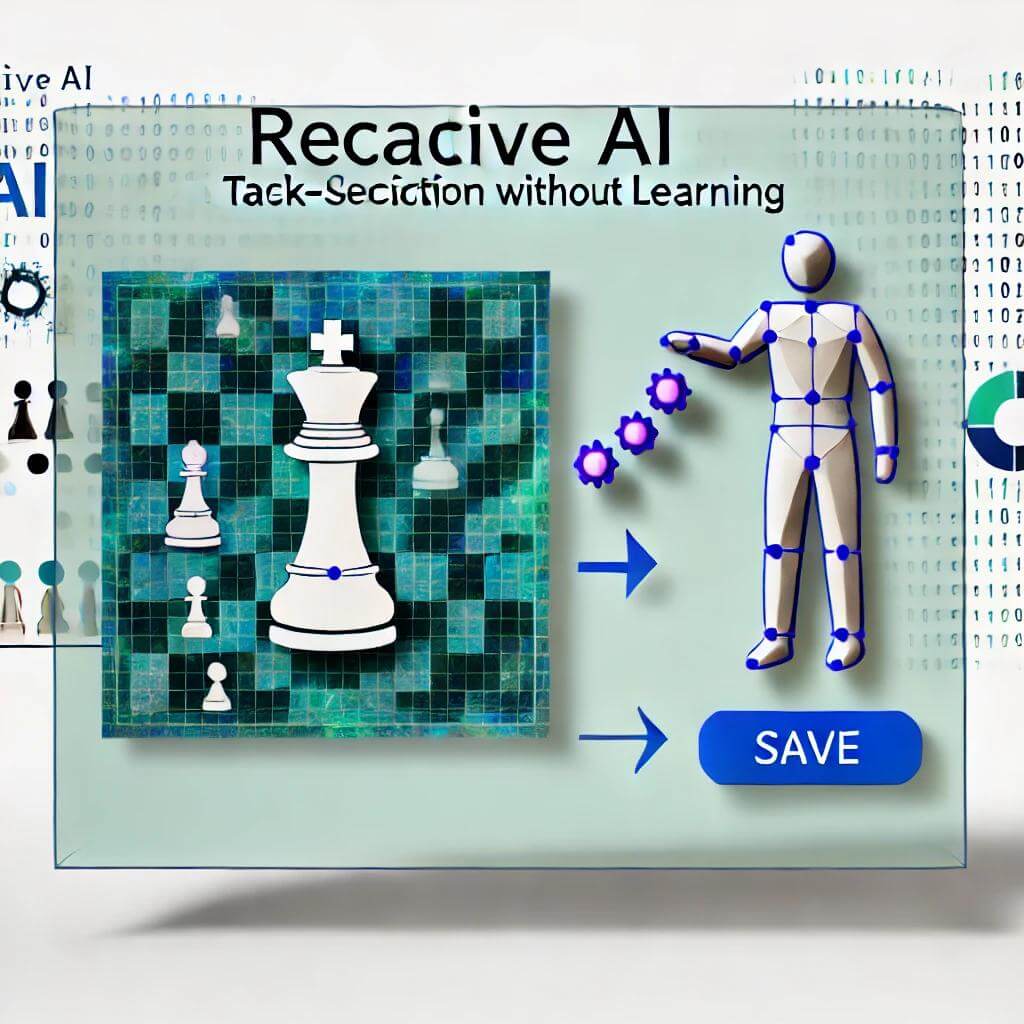General AI: The Future of Human-Level Intelligence
General AI (Strong AI): The Theoretical Future of Intelligence
Imagine a machine that could think, learn, and reason like a human being, capable of performing any intellectual task we can. This idea, known as General AI or Strong AI, is one of the most ambitious goals in the field of artificial intelligence. Unlike Narrow AI, which is designed for specific tasks, General AI would have the ability to understand the world, adapt to new challenges, and even develop its own insights and knowledge.
In this article, we’ll dive into what General AI is, how it differs from the AI we use today, and the challenges involved in creating a machine with human-level cognition. We’ll also explore how General AI is often depicted in science fiction and contrast that with the current reality of AI research.
What is General AI?
At its core, General AI refers to a system that can mimic human intelligence in a way that allows it to perform any intellectual task a human could. While today’s AI systems excel in specific areas, like language translation or image recognition, General AI would be able to navigate through multiple domains, learning new skills without human intervention.
Capabilities of General AI
General AI’s defining characteristic is its ability to adapt to different tasks without needing to be explicitly programmed for each one. This type of AI would be capable of:
- Learning and reasoning across different domains
- Understanding and processing complex information like emotions or social interactions
- Solving novel problems without prior training
- Communicating in a way that mirrors human understanding
Unlike Narrow AI, which requires large datasets and specific instructions, General AI could potentially learn on its own and make decisions based on any scenario it encounters.
The Difference Between Narrow AI and General AI
To understand General AI, it’s important to recognize the gap between it and the Narrow AI systems we interact with today. Narrow AI excels at specialized tasks but is limited by its programming.
Comparison of Narrow AI and General AI
| Narrow AI (Weak AI) | General AI (Strong AI) |
|---|---|
| Performs one specific task (e.g., facial recognition, language translation) | Can perform any intellectual task a human can do |
| Cannot generalize knowledge across tasks | Can apply learning from one domain to any other domain |
| Requires explicit programming or training | Can learn and adapt without new programming |
| Lacks self-awareness or understanding of its own processes | Could potentially possess human-like cognition |
In short, Narrow AI is like a tool designed for a specific purpose, while General AI would be more like a human brain capable of reasoning, adapting, and learning in a broad range of situations.
Challenges in Achieving General AI
While the idea of General AI is captivating, there are significant hurdles to making it a reality. These challenges span ethical, technological, and computational issues.
Ethical Challenges
Creating a machine with human-level cognition comes with a host of ethical concerns. If an AI could think and reason like a human, would it deserve rights? How would we ensure it doesn’t cause harm? These questions raise concerns about control, accountability, and the impact General AI could have on society.
Technological and Computational Challenges
Building General AI requires breakthroughs in several areas:
- Computing Power: Current AI systems demand immense computational resources. General AI would need even more, as it would need to process vast amounts of information in real-time across different domains.
- Learning Models: Most machine learning models today rely on training with large datasets. General AI would need to learn dynamically, requiring models that can generalize across situations.
- Human-like Reasoning: One of the greatest challenges is replicating the depth of human reasoning. While Narrow AI can mimic certain tasks, it doesn’t “understand” them. General AI would need to reason through complex situations in ways humans do naturally.
Examples in Fiction vs. Reality
In science fiction, General AI is often depicted as an omnipotent machine capable of understanding and controlling the world around it. Some popular examples include HAL 9000 from 2001: A Space Odyssey and Data from Star Trek. These fictional AIs can converse like humans, perform diverse tasks, and even develop their own consciousness.
However, the reality of AI development today is far less dramatic. The AIs we use are highly specialized and limited in scope. Self-driving cars, virtual assistants, and AI recommendation systems are powerful, but none come close to the adaptability or general reasoning portrayed in science fiction.
Fictional General AI vs. Real-World AI
| Fictional Depictions | Real-World AI |
|---|---|
| Self-aware, sentient machines | Highly specialized systems with no awareness |
| Capable of moral reasoning and complex decision-making | Limited to tasks they are specifically trained for |
| Can perform a wide variety of tasks, often beyond human capabilities | Constrained to specific domains and require human input |
Current Research and Future Potential
Despite the challenges, researchers are working on projects that could bring us closer to General AI. Much of this work focuses on cognitive modeling, which attempts to replicate how the human brain processes information.
Cognitive Modeling
One approach to developing General AI is by studying the human brain itself. Cognitive modeling seeks to map out how humans learn, reason, and solve problems, with the goal of translating these processes into AI algorithms.
Key Areas of Research
- Neuroscience-inspired models: These AI models attempt to replicate how neurons in the brain interact and process information.
- Lifelong learning: Researchers are exploring how to create AI systems that, like humans, can continuously learn and adapt over time.
- Embodied AI: This branch of AI research focuses on giving machines a physical presence, allowing them to interact with the world like humans do, which could help develop a more general form of intelligence.
Conclusion
General AI remains a theoretical concept, far beyond the capabilities of today’s Narrow AI systems. While Narrow AI excels in specific tasks like language translation and image recognition, General AI would be a massive leap, allowing machines to think, reason, and adapt like humans.
Achieving this vision comes with significant challenges, both technological and ethical, but ongoing research in areas like cognitive modeling and machine learning shows that we’re making steady progress. Though it might take decades, or even centuries, the dream of creating machines with human-like intelligence continues to inspire scientists, researchers, and technologists around the world.




Post Comment